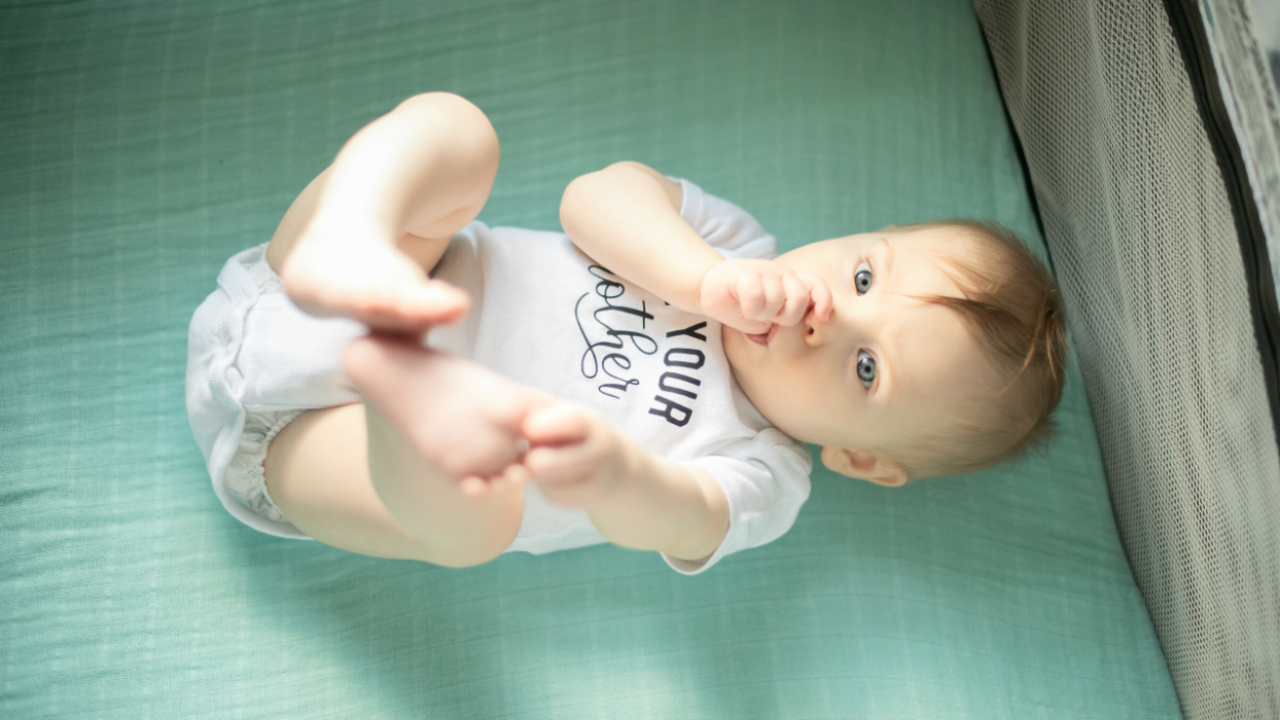Essential Tips for Dressing Your Baby for a Peaceful Sleep

(reviewed and updated March 9, 2025)
As a new parent, one of the biggest challenges you may face is getting your baby to sleep through the night. While there are many factors that can affect your baby's sleep, one important aspect to consider is how you dress your baby for sleep.
The right sleepwear can make a significant difference in your baby's comfort and ability to sleep soundly. In this article, we'll discuss some essential tips for dressing your baby for a peaceful sleep.
Why is Dressing Your Baby for Sleep Important?
Babies have a hard time regulating their body temperature, which can make it difficult for them to sleep comfortably. This is why it's crucial to dress your baby appropriately for sleep, especially during the colder months.
Additionally, babies have a higher risk of Sudden Infant Death Syndrome (SIDS) if they overheat while sleeping. By dressing your baby in the right sleepwear, you can help prevent overheating and reduce the risk of SIDS.
Choose the Right Fabric
When it comes to dressing your baby for sleep, the fabric of their sleepwear is crucial. It's best to choose soft, breathable fabrics that will keep your baby comfortable and prevent overheating.
Cotton is an excellent choice for baby sleepwear as it is soft, lightweight, and breathable. It also absorbs moisture, keeping your baby dry and comfortable throughout the night.
Avoid synthetic fabrics such as polyester, as they can trap heat and cause your baby to overheat. Additionally, avoid wool as it can be irritating to your baby's sensitive skin.
Consider the Temperature of the Room
The temperature of your baby's room is another essential factor to consider when dressing them for sleep.
The ideal room temperature for a baby's sleep is between 68-72 degrees Fahrenheit.
If the room is too warm, your baby may become uncomfortable and have trouble sleeping. On the other hand, if the room is too cold, your baby may wake up due to feeling too cold.
To ensure your baby is comfortable, dress them in layers that can be easily added or removed depending on the temperature of the room. This way, you can adjust their clothing as needed without disrupting their sleep.
Use Sleep Sacks or Wearable Blankets
Instead of using traditional blankets, which can pose a suffocation risk, consider using sleep sacks or wearable blankets. These are designed to keep your baby warm and cozy without the risk of suffocation.
Sleep sacks are sleeveless, wearable blankets that come in various sizes and thicknesses. They are a safe and convenient option for keeping your baby warm while they sleep.

Avoid Loose Clothing
When dressing your baby for sleep, it's essential to avoid loose clothing that can pose a suffocation risk. Loose clothing can also get tangled around your baby's neck, increasing the risk of SIDS.
Avoid clothing with drawstrings, ribbons, or buttons that can come loose and become a choking hazard. Instead, opt for sleepwear with a snug fit that is comfortable for your baby to sleep in.
Dress Your Baby in Layers
Babies can easily become too hot or too cold while sleeping, which can disrupt their sleep. To prevent this, dress your baby in layers that can be easily added or removed as needed.
Start with a onesie or a sleep sack as a base layer, and then add a layer of pajamas on top. This way, you can easily remove a layer if your baby becomes too warm without having to completely undress them.

Consider the Diaper
When dressing your baby for sleep, it's essential to consider their diaper as well. A wet or dirty diaper can cause discomfort and disrupt your baby's sleep.
Ensure that your baby's diaper is clean and dry before putting them to bed. You can also consider using overnight diapers, which are designed to absorb more moisture and keep your baby dry throughout the night.
Dress Your Baby According to the Season
The season can also play a significant role in how you dress your baby for sleep. During the colder months, it's essential to dress your baby in warm, comfortable sleepwear to keep them cozy and comfortable.
In the summer, opt for lightweight, breathable fabrics to prevent your baby from overheating. You can also use a fan or air conditioning to keep the room at a comfortable temperature for your baby to sleep in.
Pay Attention to Your Baby's Cues
Every baby is different, and what works for one may not work for another. Pay attention to your baby's cues and adjust their sleepwear accordingly.
If your baby is fussy or restless, they may be too hot or too cold. Check their temperature and adjust their clothing as needed to help them sleep more comfortably.
Conclusion
Dressing your baby for sleep is an essential aspect of ensuring they get a peaceful night's rest. By choosing the right fabric, considering the temperature of the room, and dressing your baby in layers, you can help them sleep comfortably and reduce the risk of SIDS.
Remember to pay attention to your baby's cues and adjust their sleepwear accordingly. With these tips in mind, you can help your baby get the rest they need for healthy growth and development.












